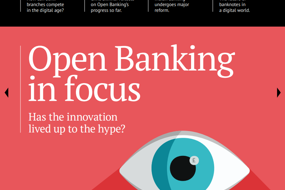Australian Royal Commission - Key Takeaways and Outcomes
Kevin Nixon from Deloitte examines some of the key takeaways and outcomes from the Australian Royal Commission final report.Kevin Nixon from Deloitte examines some of the key takeaways and outcomes from the Australian Royal Commission final report.
The world has been watching the Australian Royal Commission into Misconduct in the Banking, Superannuation and Financial Services Industry with intent. Established on 14 December 2017 and led by High Court Justice and Royal Commissioner Kenneth Hayne, the Royal Commission released the final report to a waiting audience on 4 February 2019. The 76 recommendations within the report represent a measured and pragmatic response, and, as such, have divided opinion.
Seven rounds of public hearings were held. They covered themes from insurance and financial advice, to those living in remote communities and the agricultural sector, to broader structural questions.
These hearings were a combination of case studies and appearances from those affected by misconduct, as well as the very public cross-examination of the banks’ CEOs and senior leadership in particular, as well as insurers and wealth managers. Over the period, more than 10,000 complaints were submitted by the public – and it seemed like just as many headlines.
Responsible lending
Commissioner Hayne comments that the issue at hand is not one of a lack of regulation, but an apparent perception that compliance [to the law] is voluntary. Despite the report’s first chapter being entitled ‘Banking’, mortgage brokers seem to be the hardest hit, with large structural changes recommended. These include formal requirements for brokers to act in the ‘best interests’ of borrowers, with a civil penalty on breach.
Remuneration recommendations
As well as changes in commission structures, the report provides broader recommendations on remuneration, particularly where practices have the potential to lack accountability or lead to conflicts of interest. These include extending remuneration structures to non-financial risks such as misconduct and compliance.
Broadening BEAR
One of the most important recommendations is the proposed expansion and modifications to the Banking Executive Accountability Regime (BEAR) – a form of the UK’s Senior Managers Regime. By broadening BEAR, there will be a greater focus on accountability across the industry and more formal governance built into organisational structures.
Retaining regulation
The report recommends retaining the current regulatory structure. However, it calls for several major changes in supervision and enforcement. These include greater collaboration between the Australian Prudential Regulation Authority (APRA) and the Australian Securities and Investments Commission (ASIC) through new principles for co-regulation, statutory obligations for cooperation and information sharing, and joint administration of BEAR.
With these changes, we are likely to see a more empowered regulatory mechanism, greater enforcement, and increased industry oversight.
It is clear that the Royal Commission will have a lasting impact on the Australian financial services industry, even if only for the long path to rebuilding trust.
Importantly for international observers, the Royal Commission has highlighted that robust compliance, monitoring, reporting and accountability mechanisms are critical to managing conduct and maintaining trust.
Kevin Nixon, Global Advisor, Deloitte.
Read our Spring magazine feature for more on the fall-out from the Hayne Report. |
|

